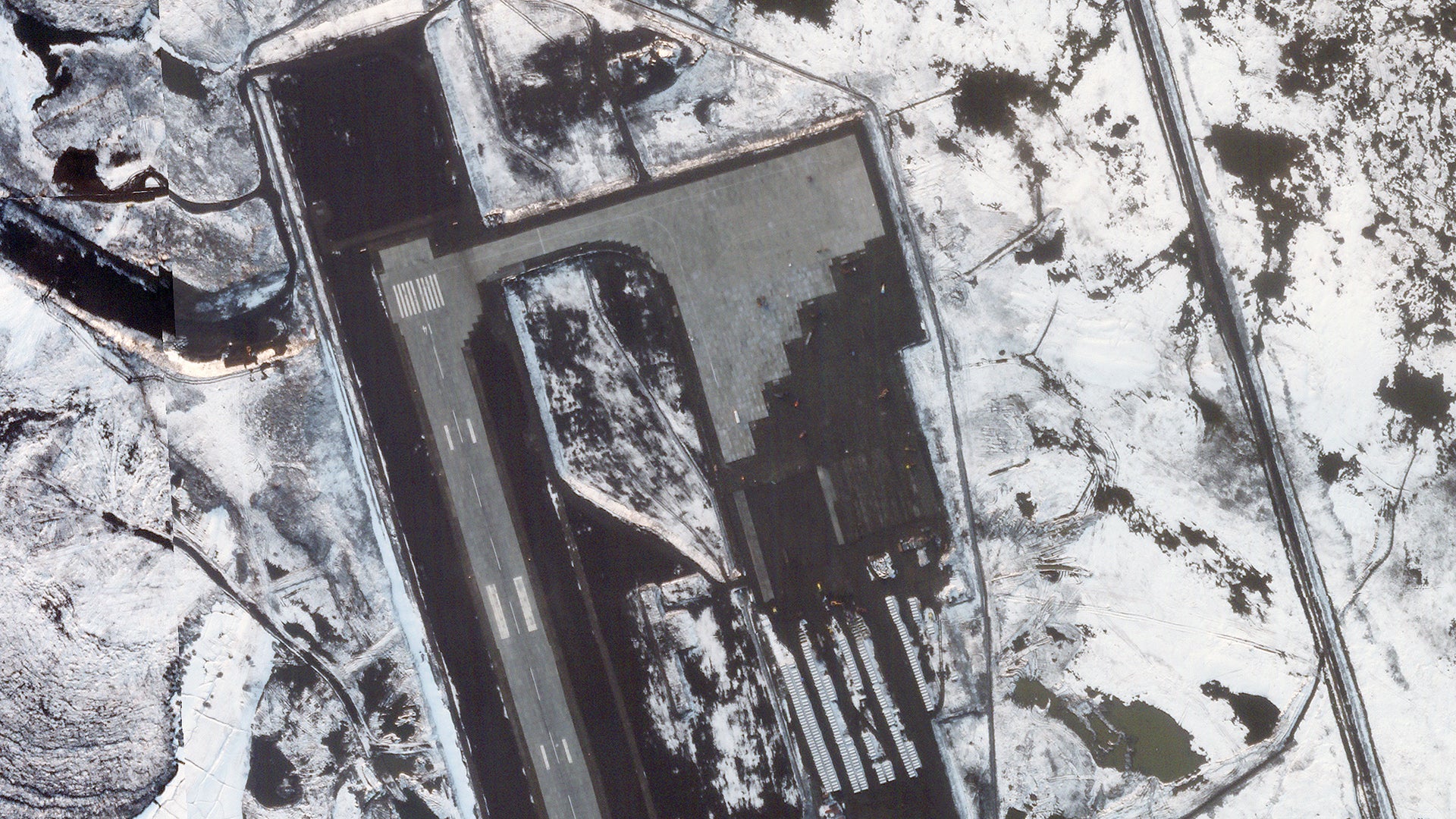Russia is continuing to expand its aviation facilities at Nagurskoye Air Base, which sits adjacent to its large Arctic Trefoil outpost. A year ago nearly to the day, we reported on Russia’s work to expand the base’s runway from 8,200 feet to 11,500 feet before winter, as well as prepping other areas for improvement. Now it appears that not only was the runway extension successfully executed last winter, as predicted, but a new, massive parking apron is now under construction that can support far larger aircraft deployments of aircraft than in the past. This fits with Russia’s strategy to militarily dominate the increasingly strategic Arctic region, which will see new shipping routes emerge due to climate change and is high in energy reserves. In fact, satellite imagery also shows that a small deployment of cargo aircraft, A-50 Mainstay airborne early warning aircraft, and MiG-31 Foxhound interceptors already occurred last winter.
You can see the massive apron under construction at the highly remote base in the image at the top of this story and below, which was taken by Planet Labs on August 19th, 2021:

As noted earlier, the new apron sits next to the large runway extension that was completed last summer. You see below what the runway looked like during that construction around this time last year:
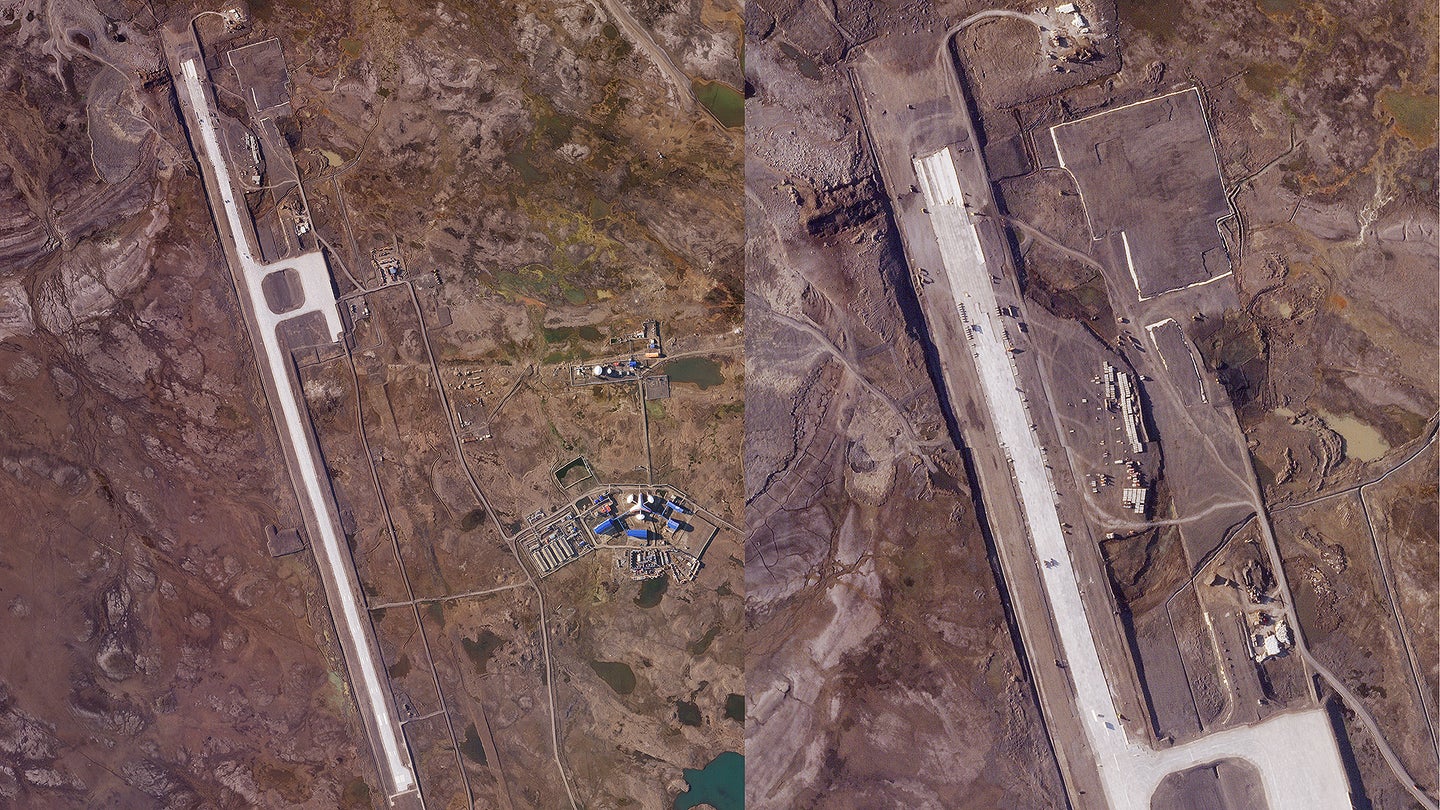
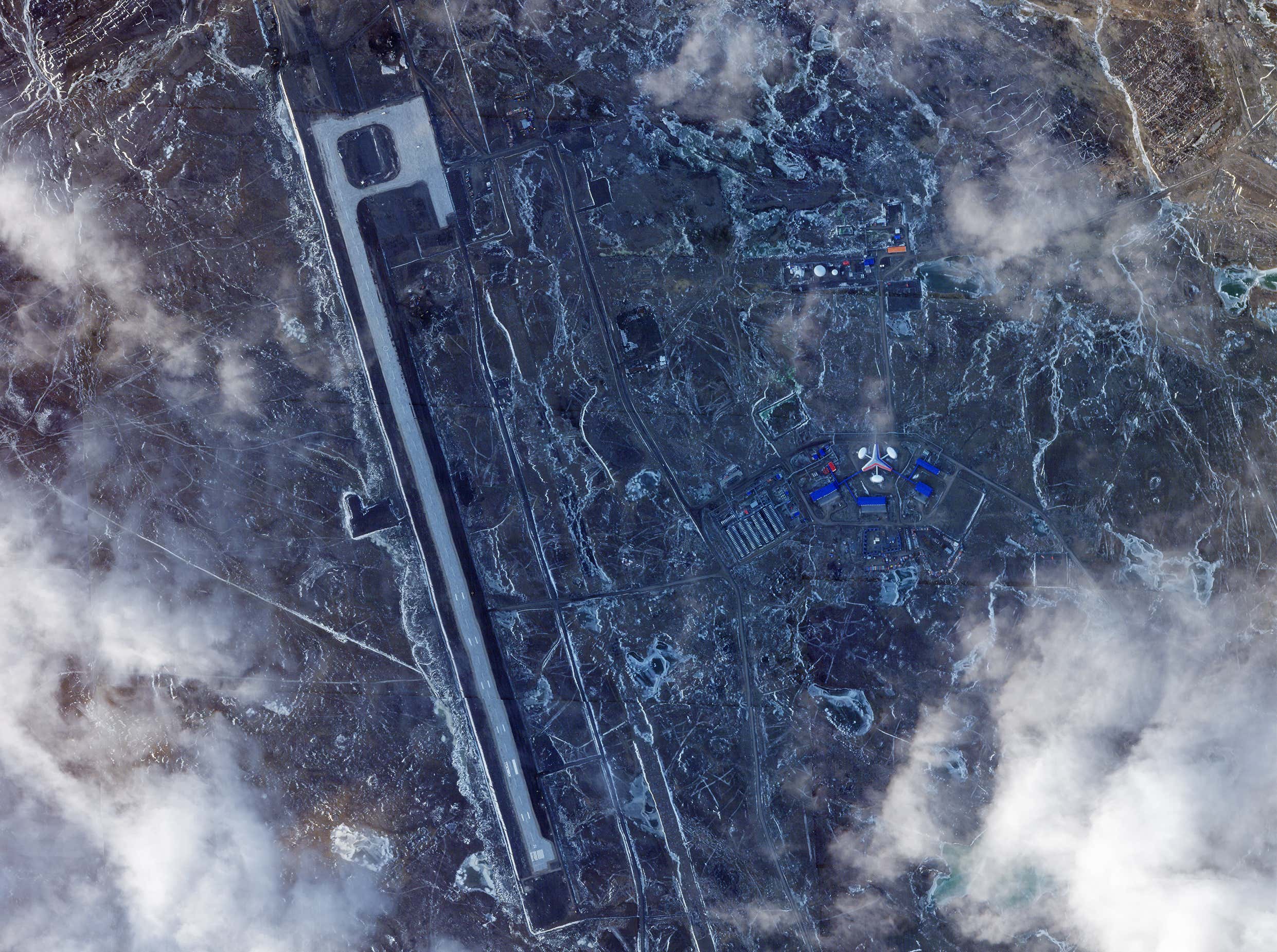
As you can see, this new large apron area in the northern area of the base will connect with the smaller existing apron area located midfield. This lengthened runway and the existing parking area were used last winter, when a deployment of Il-76 and An-26 cargo aircraft, as well as an A-50 airborne early warning aircraft and MiG-31 Foxhound interceptors, called the base home for a period of time.
The A-50 and Foxhound combo could provide a large anti-air umbrella over a major swathe of the Arctic region. Now, with an expanded runway and greatly enlarged parking areas, these deployments can grow dramatically, and will likely include strategic bombers and maritime patrol aircraft in the future.
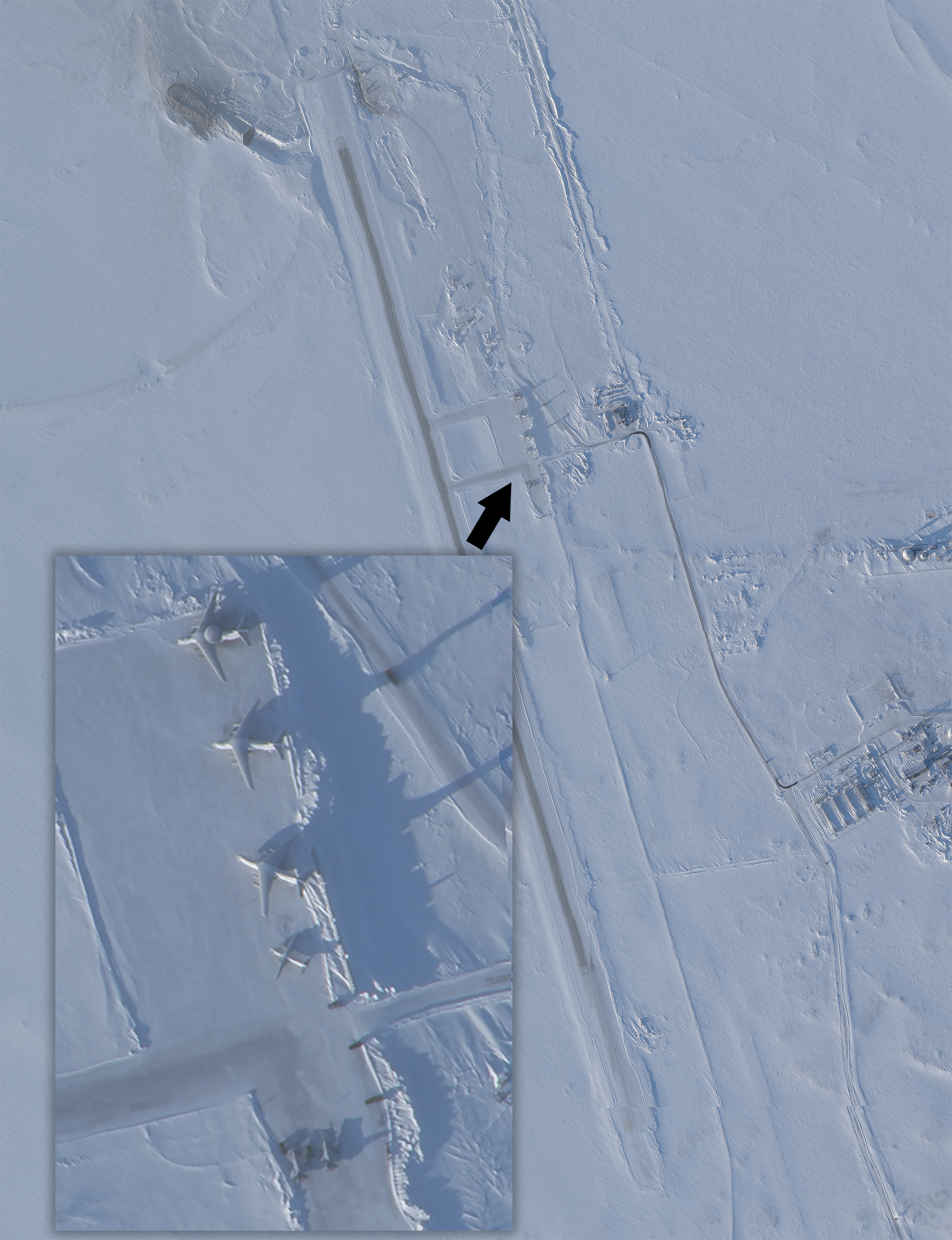
Our analysis on what the highly strategic installation could provide really hasn’t changed, but the addition of the large apron area was the missing link needed to ramp up and support persistent combat aircraft operations from the base. We stated the following a year ago:
The work being done represents a major expansion of the strategic airfield, which sits on an island called Alexandra Land in the Franz Josef archipelago, since Russia first announced plans to establish it in 2016. At that time, a separate dirt strip located to the east at the original base, which then became a snow-covered runway in the winter months, measuring just over 5,575 feet long, was the only means of supporting air operations there.
Russia began paving the new air base’s runway, as well as an apron, in 2018. In April 2020, a press release from the Russian Navy’s Northern Fleet declared that the completed facility was capable of regular operations throughout the year.
That announcement was already a major development, regardless of Nagurskoye Air Base’s size. Since around 2014, Russia has embarked on a campaign to steadily expand its physical presence in the Arctic, including the construction of new airfields, as well as the refurbishment of existing sites. As it stands now, there are a number of operating locations in the country’s frigid northern regions. However, a significant number of these sites are little more than seasonal ice runways, which do not allow for year-round operations, and therefore offer much more limited benefits for the Russian military. The risk of extremely poor weather remains a major hazard to aerial activity in the region, in general. In fact, just getting a satellite image of the base is extremely rare, with cloud cover being present consistently throughout the year.
The increasingly robust air base at Nagurskoye raises the possibility that combat aircraft will actually be permanently, or at least rotationally stationed there sometime in the near term. As far back as 2016, the Russian Ministry of Defense had publicly laid out plans to build special heated hangars there to house MiG-31 Foxhound interceptors or Su-34 Fullback combat jets, as well as Il-78 aerial refueling tankers. There have been continued reports since then that a unit of MiG-31s could eventually take up station at the Arctic air base.
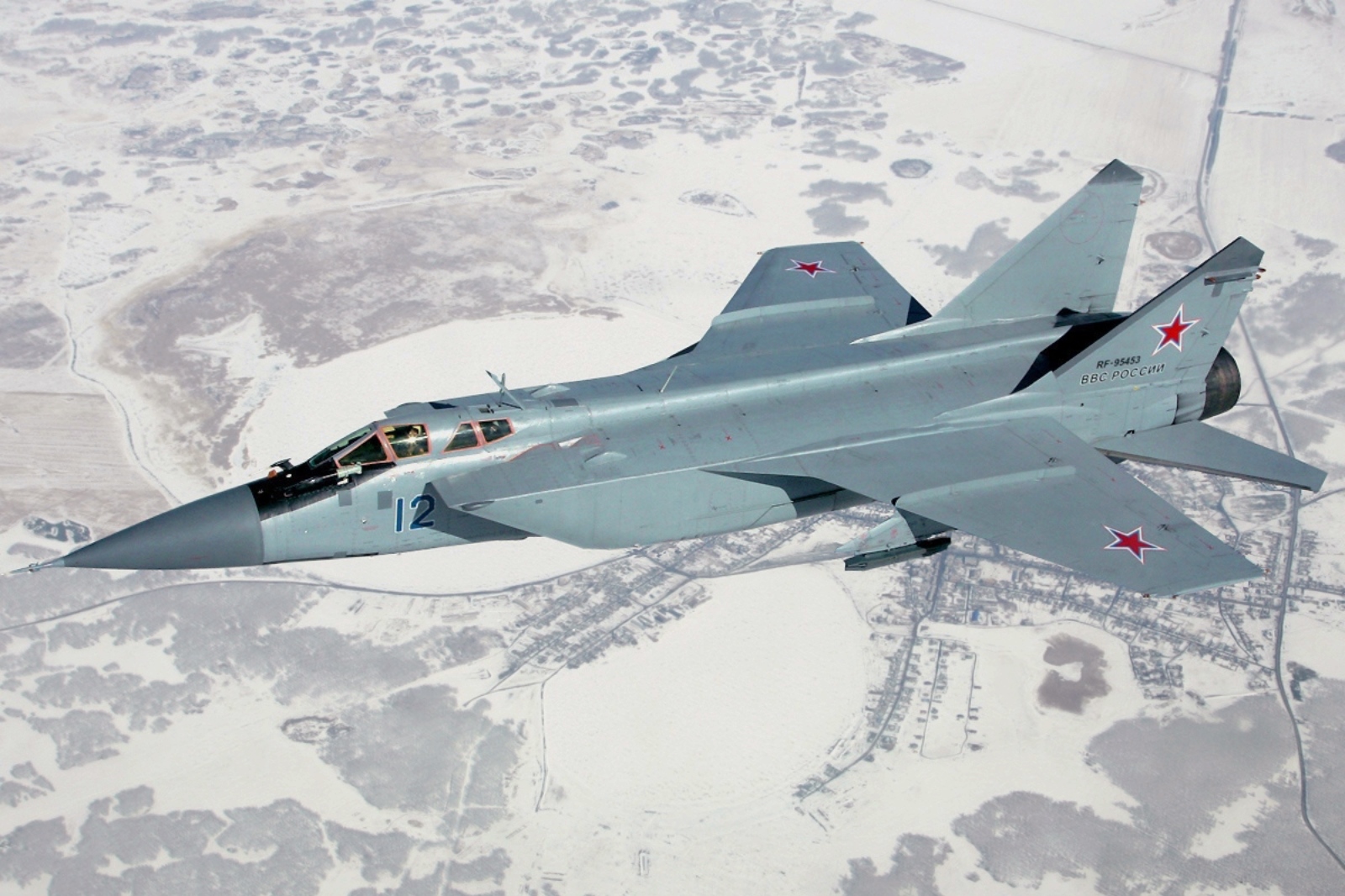
Il-76 Candid airlifters already make trips to help bring in supplies, equipment, and personnel to the remote outpost. These flights have supported the continued growth of the Arctic Trefoil, which you can read more about in this past War Zone piece. Construction of much more expansive facilities in recent years has enabled the base to support larger operations, as well as the construction of a radar site to allow personnel to better monitor nearby air and sea activity. Russia has also indicated that it could establish actual air defenses at the site to further protect it.
With its much longer runway, as well as any other improved facilities, Nagurskoye may be more capable of acting at least as a forward staging base for larger aerial assets, such as Tu-95 Bear and Tu-160 Blackjack bombers and Tu-142 Bear and Il-38 maritime patrol aircraft. These aircraft have already been conducting more regular flights in the Arctic from bases on mainland Russia, presenting numerous challenges to potential opponents, especially with regards to foreign submarine operations, which have long used the remote, often ice-covered waters to help evade detection while conducting various activities.
Russia’s entire Arctic push has been driven in no small part by receding polar ice, a product of global climate change, allowing Russian military forces and commercial interests, as well as those from other countries, to operate more regularly in the region. This has notably included increased commercial shipping activity through Arctic waters during periods of the year when those routes had previously been impassable, or at least required the use of ships with ice-capable hulls or escorting icebreakers. There is also now new potential for the exploitation of various natural resources in the region, ranging from oil to fish. All of this has, in turn, increased the potential for both competition and conflict.
Even just using Nagurskoye as a base for interceptors and strike aircraft would mean that Russia has the only tactical air combat capabilities permanently stationed in the entire region. A mix of interceptors and maritime strike fighters, as well as airborne early warning and maritime patrol aircraft, would give Russia the ability to reach out from its most northerly base and control the skies and seas over long distances around it. This, together with any future ground-based defenses, would give the Kremlin an anti-access/area-denial upper-hand in what could very well become one of the most hotly contested areas of the planet, but one that is also incredibly inhospitable and would present significant operational challenges for opponents without a similarly well-established physical presence in the region.
We have seen similar airfield expansion efforts in Syria that, as predicted, precipitated the deployment of strategic bomber aircraft and MiG-31s. With all this in mind, if Russia can finish the apron by the time the very harsh weather hits at its most northerly major military installation, winter could see the deployment of large numbers of combat to the new apron. In that regard, last year’s deployment of an A-50 and a handful of MiG-31s was likely just a preview of what to come as Moscow moves to cement its military supremacy over the ever more important Arctic.
Contact the author: Tyler@thedrive.com
